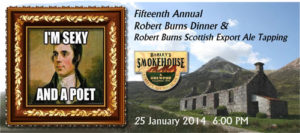
In Scotland, you can’t go very far without running into Robert Burns in some form or another.
On July 1, 1999, the Scottish Parliament opened for business for the first time since 1707. For nearly three hundred years, direct rule from Westminster had shaped the destinies of all Scots, a situation that did not sit well with Scottish nationalists of any degree of fervor, so it was a joyous occasion in Edinburgh on that day in 1999. The Queen was there to give a speech, a parade supplied the appropriate pomp and grandeur, and crowds thronged the city to catch a glimpse of the proceedings or the celebrities. But for many, the most poignant and important moment of the day was when folksinger Sheena Wellington stood up in the chamber to sing “A Man’s a Man for a’ That” by Robert Burns.
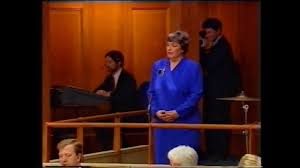
To listen to the performance, click here. For Scots words you don’t know, click here.
What better way to celebrate democracy, representative government, and an egalitarian society in which the “content of [one’s] character” matters more than wealth, position, race, or creed? As a number of his poems reveal, Robert Burns was interested in these ideas, which were deemed radical and dangerous in his time. In his youth, he had been inspired by the American Revolution and in 1795, when his radical poem was published, the French Revolution raged on very close to home. Anyone in Great Britain who expressed overt sympathy with the revolutionaries across the channel would have been in serious trouble.
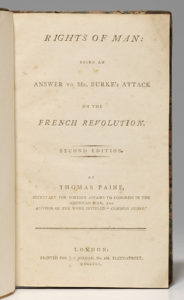
Tellingly, Burns never agreed to the publication of the poem with his name attached, though his fame was such and his idiom so well known that others were easily able to guess who wrote it. The poem doesn’t go so far as to advocate the destruction of the upper classes, but it does argue forcefully for what Tom Paine had deemed “the rights of man”—the rights of the common man—just a few years earlier (1791).
“A Man’s a Man for A’ That” is copied below if you want to read or review it. Here are just a few thoughts about each stanza.
As is often the case, Burns titled the poem after its first line, “Is There for Honest Poverty,” but it wasn’t long before it became know for the key line in stanza 3, including the repetition of the phrase “for a’ that” (“for all that”). That three-word phrase and several variations of it (“a’ that,” “an a’ that”) form a “through line” of both meaning and rhythm throughout the five stanzas. The meaning shifts slightly with each repetition, but “a’ that” always implies a shared understanding or common ideals. It is one of the many democratizing claims in the poem. “The Man’s the gowd [gold] for a’ that” is another: the man or the person is the “gold,” not the rank, the clothing, fancy food and wine, the money, or anything else acquired for show or to hold power over others.
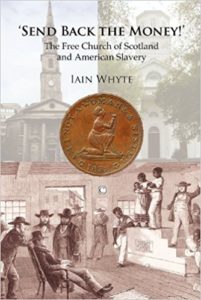
Some scholars have linked the phrase “coward-slave” to the question of slavery and abolition, very much in public debate in Burns’s circle. Was he somehow looking down on slaves, blaming them for their captivity and subservience? This interpretation doesn’t jive with the rest of the poem or with what we know of Burns’s albeit complicated views on slavery. He claimed to be against slavery, but at one point he did contemplate emigrating to Jamaica and working as a sort of administrator-worker on a plantation–a tacit approval, perhaps, of the economic arrangements found there.
From another perspective, “coward-slave” could also refer to someone who allows his mind, his dignity to be “enslaved” by acquiescence to rank and wealth, an idea that emerges later in the poem when Burns lauds the ” independent mind.” Welcome to the world of literary interpretation where, maddeningly, “nothing is only one thing” (To the Lighthouse by Virginia Woolf, 1927)!
As an educator, I particularly like the last lines of stanza 3, in which Burns celebrates “the man o’ independent mind.” The poet seems to be reminding us that we ourselves have the capacity to break free of society’s false strictures. The “birkie ca’d a lord” [spirited fellow called a lord] who “struts, an’ stares, an’ a’ that” is “but a coof [fool] for a’ that.” The man of independent mind is truly free because he has the strength of character to laugh at “a’ that,” seeing it for what it is. I intend to start using “coof” in my everyday vocabulary.
An honest man is above the “might” of a prince, a marquis, or a duke (Stanza 4)—” Guid faith, he mauna fa’ that!” [Good faith, he must not fault that!] –an honest man must not fault that
For a’ that, an’ a’ that,
Their dignities, an’ a’ that,
The pith o’ Sense an’ pride o’ Worth
Are higher rank than a’ that.
Sense and self-worth are the only marks of high rank worth recognizing. Would that we lived in a world today where that was true!
The last stanza of Burns’s poem foreshadows another great utterance that would come in a speech more than 150 years later. A comparison of the two reminds us of the long journey towards equality and social justice. Here is Burns.
For a’ that, an’ a’ that,
It’s comin yet for a’ that,
That Man to Man the warld o’er
Shall brithers be for a’ that.
And here is Martin Luther King, Jr. on August 28, 1963, from the 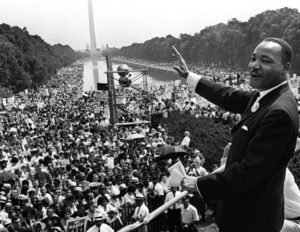 Lincoln Memorial in Washington DC.
Lincoln Memorial in Washington DC.
I have a dream that…one day right there in Alabama, little black boys and black girls will be able to join hands with little white boys and white girls as sisters and brothers.
Both poets–for King was a poet of oratory–use the future tense for their dream of sisterhood-brotherhood. Fifty-five years later, the struggle continues.
A Man’s a Man for a’ That
Is there for honest Poverty
That hings his head, an’ a’ that;
The coward-slave, we pass him by,
We dare be poor for a’ that!
For a’ that, an’ a’ that.
Our toils obscure an’ a’ that,
The rank is but the guinea’s stamp,
The Man’s the gowd for a’ that.
What though on hamely fare we dine,
Wear hoddin grey, an’ a that;
Gie fools their silks, and knaves their wine;
A Man’s a Man for a’ that:
For a’ that, and a’ that,
Their tinsel show, an’ a’ that;
The honest man, tho’ e’er sae poor,
Is king o’ men for a’ that.
Ye see yon birkie ca’d a lord,
Wha struts, an’ stares, an’ a’ that,
Tho’ hundreds worship at his word,
He’s but a coof for a’ that.
For a’ that, an’ a’ that,
His ribband, star, an’ a’ that,
The man o’ independent mind,
He looks an’ laughs at a’ that.
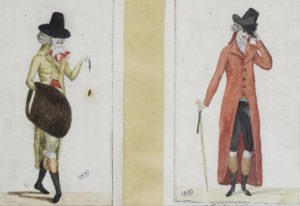
A Prince can mak a belted knight,
A marquis, duke, an’ a’ that!
But an honest man’s aboon his might –
Guid faith, he mauna fa’ that!
For a’ that, an’ a’ that,
Their dignities, an’ a’ that,
The pith o’ Sense an’ pride o’ Worth
Are higher rank than a’ that.
Then let us pray that come it may,
As come it will for a’ that,
That Sense and Worth, o’er a’ the earth
Shall bear the gree an’ a’ that.
For a’ that, an’ a’ that,
It’s comin yet for a’ that,
That Man to Man the warld o’er
Shall brithers be for a’ that.

So much beauty to see. Christine, how many pages should we ask the printer to put out with each section? I keep getting more than I need. Finishing Waverly was a triumph even if it isn’t for this coming Monday. I’m using my ASC English book for some of his poetry and the sheet from you. As to Bobbie – he’s pure delight to read even if I don’t know what some of i t means. Thank you.
Lou, Thanks for your comments! If you mean printing the home page story–the numbered “essays” I’m putting up–here’s something to try.
–Click “print” and then look down at the bottom right of the page in Print view. You should see a number like this 1/33. That means you are on page 1 of 33.
–Scroll down the pages to see how many you want to print,
–and then over on the left in the Print instructions column, click the box below “All” that lets you put in a range of numbers.
–Type in 1-5 or whatever range you want printed.
I think that should work.
No coofs here! Lovin’ reading Rabbie, and looking forward to Monday!
Saw the BBC doc last night. Very interesting. We turned subtitles on and it was a hoot. I was astonished Burns spent so much time in Asia when it turned out he was in Ayershire!!!